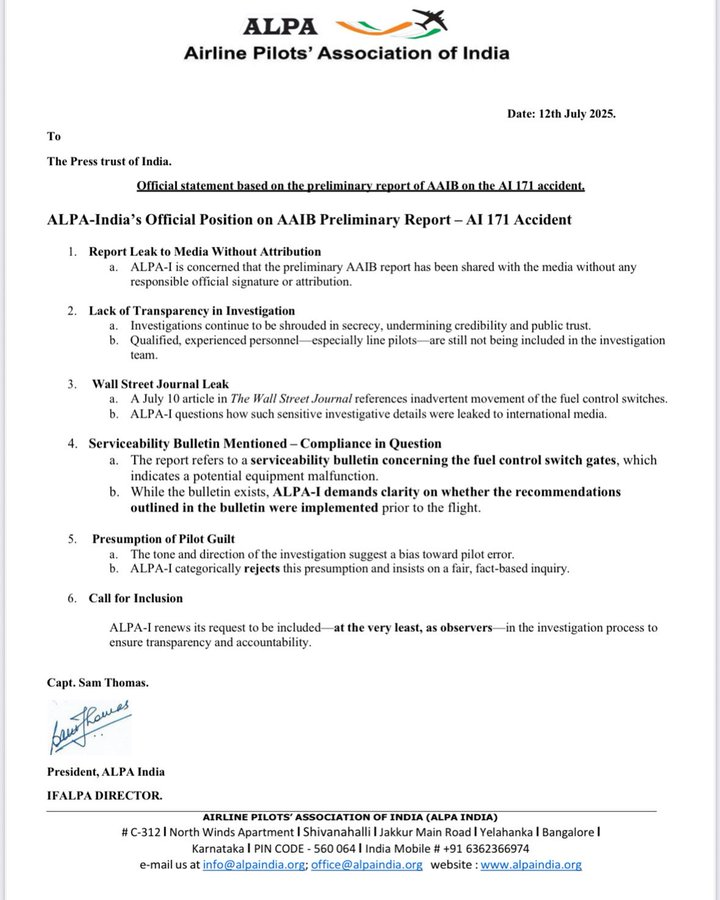'Shrouded In Secrecy': Pilots' Association Objects To Air India Crash Report, Calls For Transparency, Inclusion
The Airline Pilots’ Association of India (ALPA) has raised serious concerns over the preliminary investigation into the June 12 Air India crash in Ahmedabad. ALPA president Sam Thomas, in a statement on Saturday, criticised the investigation and claimed it is “being driven in a direction presuming the guilt of pilots.” He also said that the Aircraft Accident Investigation Bureau (AAIB) had shared the preliminary report while keeping the pilots in the dark. Thomas also said that he was surprised at the secrecy surrounding these investigations.
Citing a Wall Street Journal article of July 10, which claimed that the crash was linked to the inadvertent movement of engine fuel control switches. ALPA questioned how this sensitive detail has been given to the media.

“We are surprised that a document so crucial has been given to the media without any responsible person signing it. In the wake of the aforementioned points, we once again request the powers that be to include us even in the capacity of observers so as to provide the requisite transparency in the investigations,” it said.
ALPA also criticised the releasing of the documents without official signatures and called for immediate reform.
“We request the powers that be to include us, even in the capacity of observers, to ensure transparency,” the association said.
The preliminary report has found that the fuel supply to both engines of Air India flight AI171 was cut off within a second of each other, causing confusion in the cockpit and the airplane plummeting back to the ground almost immediately after taking off.
The 15-page report says that in the cockpit voice recording, one unidentified pilot asked the other why he had cut off the fuel, which the other denied. On June 12, the London-bound Boeing 787 Dreamliner began to lose thrust almost immediately after taking off from the Ahmedabad airport and ploughed into a medical college hostel, killing all but one of the 242 onboard and another 19 on the ground in the deadliest aviation accident in a decade.
According to a chronology laid out in the report by the Aircraft Accident Investigation Bureau, both fuel control switches—which are used to turn the engines off—were moved to the cutoff position almost immediately after takeoff. The report, however, did not say how this happened or who did it. Soon after both fuel cutoff switches moved from RUN to CUTOFF, one second apart, a RAT pump was deployed to supply hydraulic power as both engines fell below minimum idle rate. About 10 seconds later, the Engine 1 fuel cutoff switch moved to its so-called RUN position, followed by Engine 2 four seconds later. The pilots managed to relight both engines, but only Engine 1 recovered, while Engine 2 failed to build up enough power again to reverse deceleration.
(With inputs from PTI.)
india